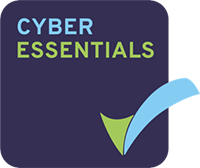Corporate wellness programs are becoming increasingly popular as companies recognize the importance of prioritising the well-being of their employees. However, many of these programs are not data-driven, which means that companies are missing out on valuable insights that could help them improve their programs and better support their employees.
Many organisations have implemented employee wellness programs with the intention of improving the health and well-being of their employees. However, many of these are content based, and engagement quickly dwindles. This shows that without proper measurement and analysis of the data, it is difficult for organisations to actively engage employees in these programmes, and also makes it difficult to determine the programme’s effectiveness.
Microsoft’s release of Copilot for Viva represents a step in the right direction, since it makes use of AI to streamline communications within an organisation. Wellness programmes should follow suit, making similar use of data driven strategies.
On the health side, data-driven wellness programs can provide valuable insights into the health status of employees, as well as identify areas for improvement. By collecting and analysing data on employee health behaviours, such as physical activity and stress levels, companies can tailor their wellness programs to better meet the needs of their employees.
But this won’t be useful just for employees. Managers can bear significant health complications as a result of the high-paced world we live in. Research by Deloitte showed that a third of executives suffer regularly from health difficulties such as stress and fatigue.
Data-driven wellness programs can also provide a better understanding of the return on investment (ROI) of these programs. By analysing data on employee health outcomes and healthcare costs, companies can determine the financial impact of their wellness programs and make informed decisions on how to allocate resources.
Overall, the implementation of data-driven wellness programs can lead to better employee health outcomes, improved ROI, and a more effective use of resources. Workplace health is crucial because it has significant implications on the productivity and morale of employees, and can optimise these factors of wellness if prioritised with actionable approaches.
To address this issue, we recommend that companies implement more data-driven strategies that track the following specific metrics to ensure the success of their initiatives:
- Employee engagement: Companies should track the level of engagement among their employees in their wellness programs. This can include metrics such as participation rates, completion rates, and feedback from employees.
- Health outcomes: Companies should also allow employees to monitor their own health outcomes anonymously and ensure that they have the tools necessary to mitigate issues like stress and burnout. Specifically, this can be done with tools that measure changes in key health metrics like BPM and HRV. This can also be coupled with a system that can aggregate the anonymised data and make it available to management, to ensure action can be taken to slow alarming health trends within the organisation. As a result, employees benefit by being empowered to monitor their health, and companies benefit by being able to understand the wellness of their workforce and take appropriate action. Visix is a key example of a wellness tool that achieves this aim to great effect.
- Productivity: Companies should track the productivity of their employees before and after implementing wellness programs. This can include metrics such as absenteeism rates, turnover rates, and employee satisfaction surveys.
- Cost savings: Finally, companies should track the cost savings associated with their wellness programs. This can include metrics such as healthcare costs, workers’ compensation claims, and lost productivity.
FAQ’s
1. Why are data-driven wellness programs important?
Data-driven wellness programs provide valuable insights into employee health status and behaviours, enabling companies to tailor their wellness programs to better meet the needs of their employees. They also provide a better understanding of the ROI of these programs and make informed decisions on how to allocate resources.
2. What are some specific metrics that companies should track to ensure the success of their wellness programs?
Companies should track employee engagement, health outcomes, productivity, and cost savings. These metrics can include participation rates, completion rates, feedback from employees, changes in key health metrics, absenteeism rates, turnover rates, employee satisfaction surveys, healthcare costs, workers’ compensation claims, and lost productivity.
3. How can data-driven wellness programs improve employee health outcomes?
Data-driven wellness programs can identify areas for improvement and provide tailored wellness programs to better meet the needs of employees. They also empower employees to monitor their health and provide tools to mitigate issues like stress and burnout.
For an example of this, be sure to take a look at Visix, our data driven wellness tool.

Author:
Nikhil Sehgal
Improving health & wellbeing with AI | Founder/CEO @ Vastmindz | Forbes 30 Under 30


